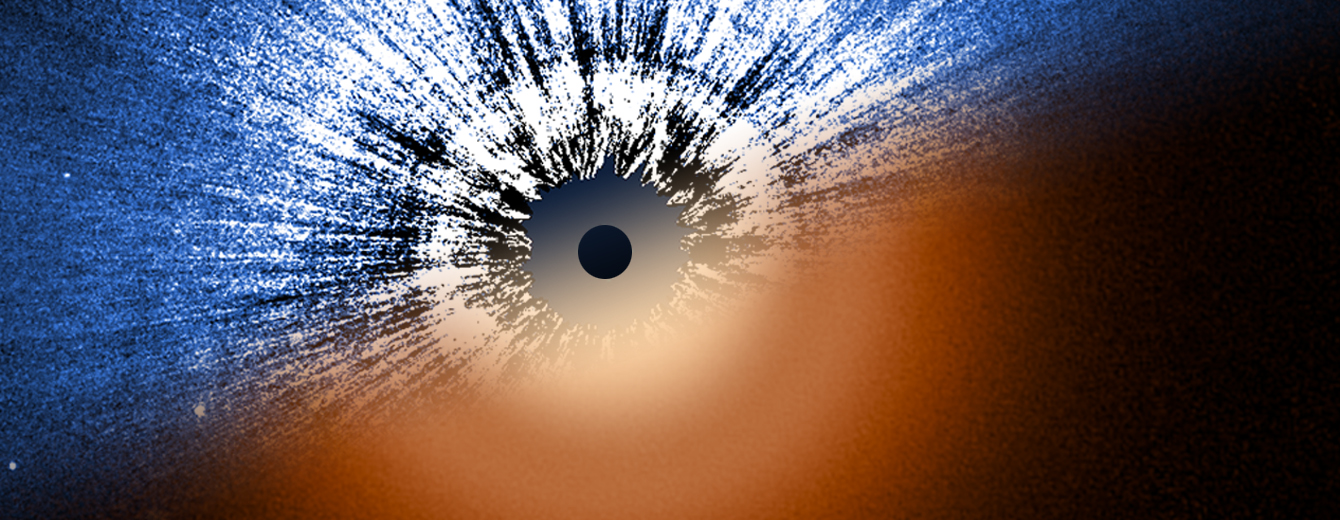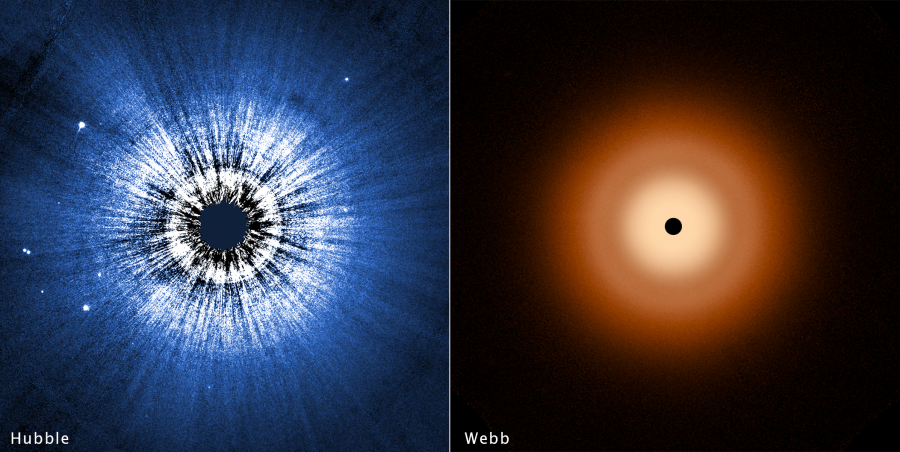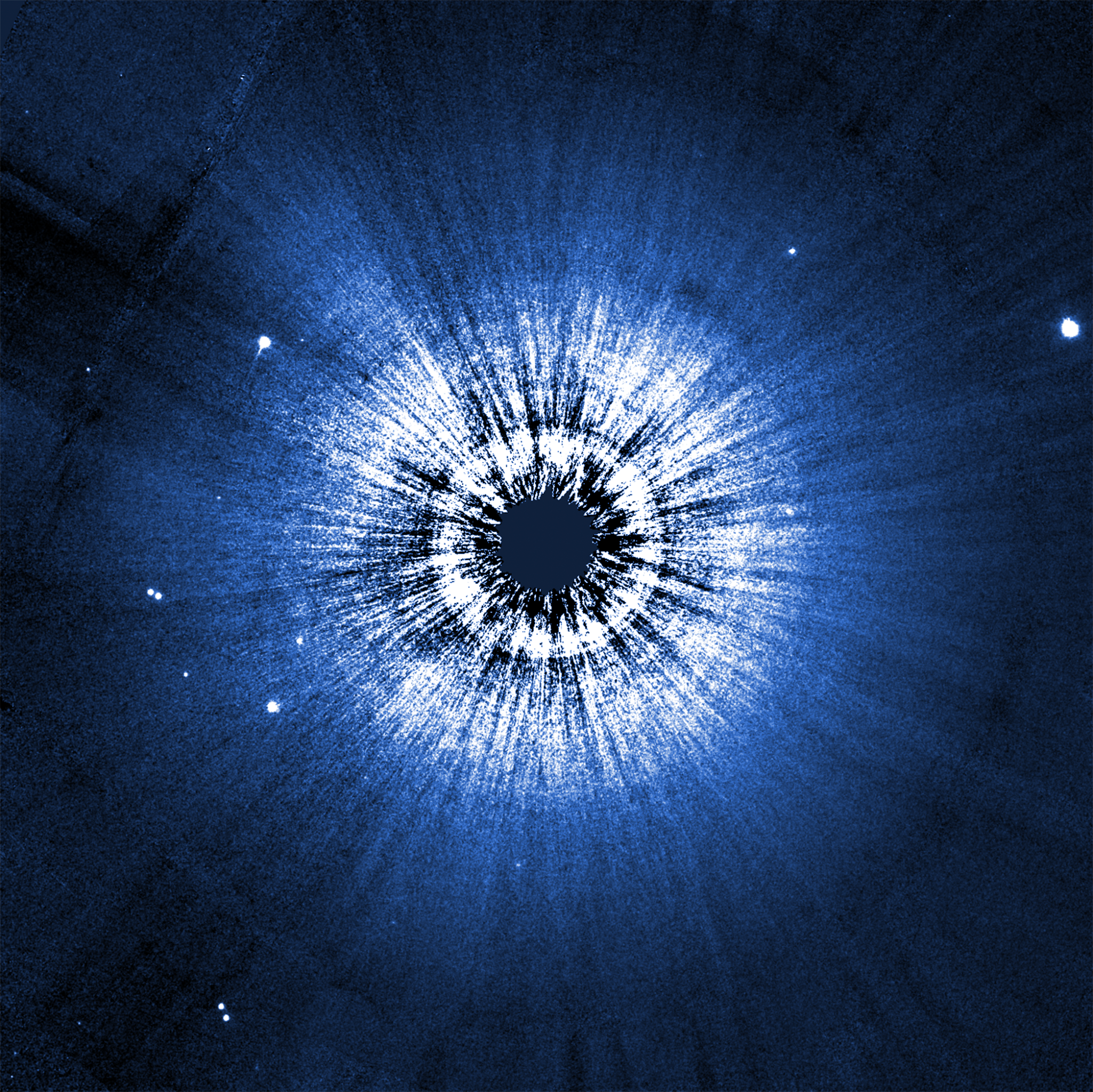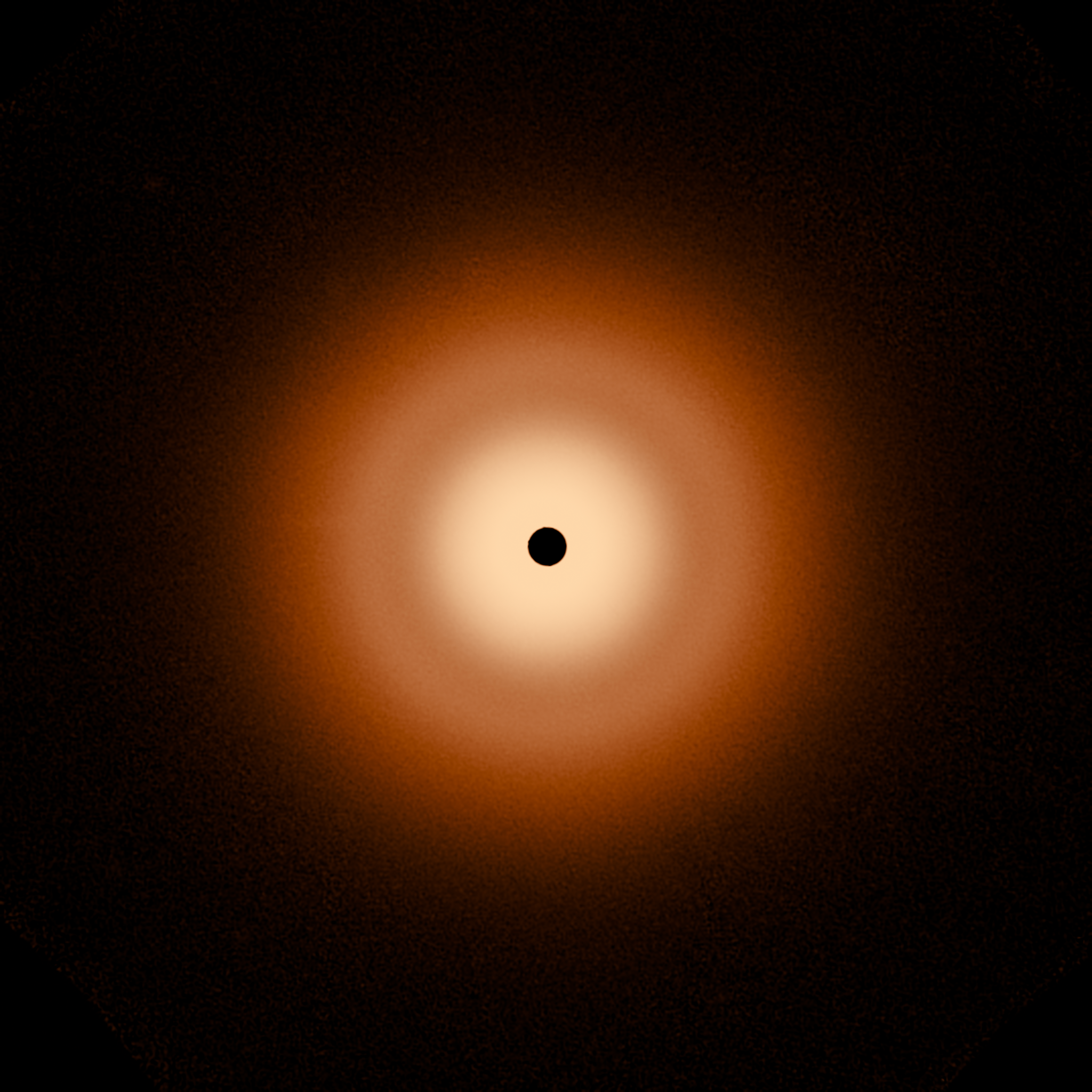In the 1997 movie "Contact," adapted from Carl Sagan's 1985 novel, the lead character scientist Ellie Arroway (played by actor Jodi Foster) takes a space-alien-built wormhole ride to the star Vega. She emerges inside a snowstorm of debris encircling the star — but no obvious planets are visible.
It looks like the filmmakers got it right.
A team of astronomers at the University of Arizona, Tucson used NASA's Hubble and James Webb space telescopes for an unprecedented in-depth look at the nearly 100-billion-mile-diameter debris disk encircling Vega. "Between the Hubble and Webb telescopes, you get this very clear view of Vega. It's a mysterious system because it's unlike other circumstellar disks we've looked at," said Andras Gáspár of the University of Arizona, a member of the research team. "The Vega disk is smooth, ridiculously smooth."
The big surprise to the research team is that there is no obvious evidence for one or more large planets plowing through the face-on disk like snow tractors. "It's making us rethink the range and variety among exoplanet systems," said Kate Su of the University of Arizona, lead author of the paper presenting the Webb findings.
[right] The James Webb Space Telescope resolves the glow of warm dust in a disk halo, at 23 billion miles out. The outer disk (analogous to the solar system’s Kuiper Belt) extends from 7 billion miles to 15 billion miles. The inner disk extends from the inner edge of the outer disk down to close proximity to the star. There is a notable dip in surface brightness of the inner disk from approximately 3.7 to 7.2 billion miles. The black spot at the center is due to lack of data from saturation.
Webb sees the infrared glow from a disk of particles the size of sand swirling around the sizzling blue-white star that is 40 times brighter than our Sun. Hubble captures an outer halo of this disk, with particles no bigger than the consistency of smoke that are reflecting starlight.
The distribution of dust in the Vega debris disk is layered because the pressure of starlight pushes out the smaller grains faster than larger grains. "Different types of physics will locate different-sized particles at different locations," said Schuyler Wolff of the University of Arizona team, lead author of the paper presenting the Hubble findings. "The fact that we're seeing dust particle sizes sorted out can help us understand the underlying dynamics in circumstellar disks."
The Vega disk does have a subtle gap, around 60 AU (astronomical units) from the star (twice the distance of Neptune from the Sun), but otherwise is very smooth all the way in until it is lost in the glare of the star. This shows that there are no planets down at least to Neptune-mass circulating in large orbits, as in our solar system, say the researchers.
"We're seeing in detail how much variety there is among circumstellar disks, and how that variety is tied into the underlying planetary systems. We’re finding a lot out about the planetary systems — even when we can’t see what might be hidden planets," added Su. "There's still a lot of unknowns in the planet-formation process, and I think these new observations of Vega are going to help constrain models of planet formation."
Disk Diversity
Newly forming stars accrete material from a disk of dust and gas that is the flattened remnant of the cloud from which they are forming. In the mid-1990s Hubble found disks around many newly forming stars. The disks are likely sites of planet formation, migration, and sometimes destruction. Fully matured stars like Vega have dusty disks enriched by ongoing "bumper car" collisions among orbiting asteroids and debris from evaporating comets. These are primordial bodies that can survive up to the present 450-million-year age of Vega (our Sun is approximately ten times older than Vega). Dust within our solar system (seen as the Zodiacal light) is also replenished by minor bodies ejecting dust at a rate of about 10 tons per second. This dust is shoved around by planets. This provides a strategy for detecting planets around other stars without seeing them directly – just by witnessing the effects they have on the dust.
"Vega continues to be unusual," said Wolff. "The architecture of the Vega system is markedly different from our own solar system where giant planets like Jupiter and Saturn are keeping the dust from spreading the way it does with Vega."
For comparison, there is a nearby star, Fomalhaut, which is about the same distance, age and temperature as Vega. But Fomalhaut's circumstellar architecture is greatly different from Vega's. Fomalhaut has three nested debris belts.
Planets are suggested as shepherding bodies around Fomalhaut that gravitationally constrict the dust into rings, though no planets have been positively identified yet. "Given the physical similarity between the stars of Vega and Fomalhaut, why does Fomalhaut seem to have been able to form planets and Vega didn't?" said team member George Rieke of the University of Arizona, a member of the research team. "What's the difference? Did the circumstellar environment, or the star itself, create that difference? What's puzzling is that the same physics is at work in both," added Wolff.
First Clue to Possible Planetary Construction Yards
Located in the summer constellation Lyra, Vega is one of the brightest stars in the northern sky. Vega is legendary because it offered the first evidence for material orbiting a star — presumably the stuff for making planets — as potential abodes of life. This was first hypothesized by Immanuel Kant in 1775. But it took over 200 years before the first observational evidence was collected in 1984. A puzzling excess of infrared light from warm dust was detected by NASA's IRAS (Infrared Astronomy Satellite). It was interpreted as a shell or disk of dust extending twice the orbital radius of Pluto from the star.
In 2005, NASA's infrared Spitzer Space Telescope mapped out a ring of dust around Vega. This was further confirmed by observations using submillimeter telescopes including Caltech's Submillimeter Observatory on Mauna Kea, Hawaii, and also the Atacama Large Millimeter/submillimeter Array (ALMA) in Chile, and ESA's (European Space Agency's) Herschel Space Telescope, but none of these telescopes could see much detail. "The Hubble and Webb observations together provide so much more detail that they are telling us something completely new about the Vega system that nobody knew before," said Rieke.
Two papers (Wolff et al. and Su et. al.) from the Arizona team will be published in The Astrophysical Journal.
The James Webb Space Telescope is the world's premier space science observatory. Webb is solving mysteries in our solar system, looking beyond to distant worlds around other stars, and probing the mysterious structures and origins of our universe and our place in it. Webb is an international program led by NASA with its partners, ESA (European Space Agency) and CSA (Canadian Space Agency).
The Hubble Space Telescope has been operating for over three decades and continues to make ground-breaking discoveries that shape our fundamental understanding of the universe. Hubble is a project of international cooperation between NASA and ESA (European Space Agency). NASA's Goddard Space Flight Center in Greenbelt, Maryland, manages the telescope and mission operations. Lockheed Martin Space, based in Denver, Colorado, also supports mission operations at Goddard. The Space Telescope Science Institute in Baltimore, Maryland, which is operated by the Association of Universities for Research in Astronomy, conducts Hubble science operations for NASA.




































